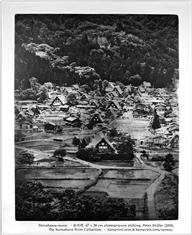
223. Shirakawa-mura ・ 白川村。 38 x 47 cm (15 x 19") photogravure etching, Carbon black etching ink on Fabriano Tiepolo (2006)

223. Shirakawa-mura ・ 白川村。 38 x 47 cm (15 x 19") photogravure etching, Carbon black etching ink on Fabriano Tiepolo (2006)
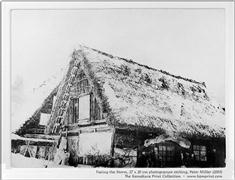
166. Facing the Storm ・ 郷里。 27 x 20 cm (11 x 8") photogravure etching, Carbon black etching ink on Fabriano Tiepolo (2003)
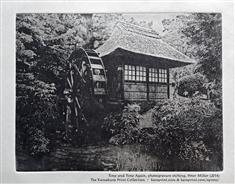
305. Time and Time Again, 33 x 25 cm (13 x 10") photogravure etching, Carbon black etching ink on 47 x 38 (19 x 15") cm Mitsumata washi (2014);
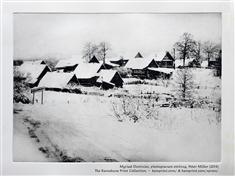
319. Myriad Destinies, 43 x 31 cm (17 x 12") photogravure etching, Warm black etching ink on Fabriano Tiepolo (2014)
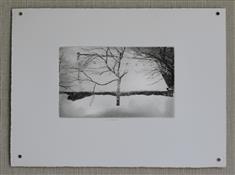
163. Ainokura ・ 相倉。 20 x 13 cm (8 x 5") photogravure etching, Carbon black etching ink on Magnani Pescia paper (2003)
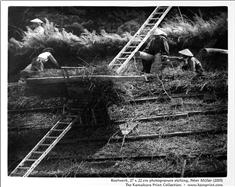
196. Roofwork. 27 x 22 cm (11 x 9") photogravure etching, Warm black etching ink on Lana Gravure paper (2005) the thatchers' art in UNESCO World Heritage Site Shirakawa Village
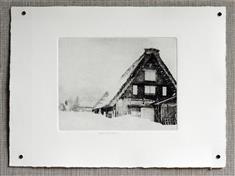
167. Silk Houses ・ 繭の里。 19 x 15 cm (8 x 6") photogravure etching, Carbon black etching ink on Magnani Pescia paper (2003)
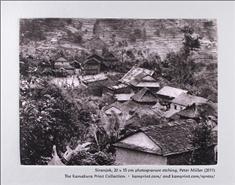
283. Siranjok, 20 x 16 cm (8 x 6") photogravure etching, French Black etching ink on Fabriano Tiepolo (2011)
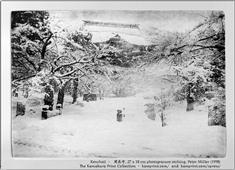
104. Kenchoji ・ 建長寺。 27 x 18 cm (11 x 7") photogravure etching, Carbon black etching ink on Magnani Pescia paper (1998)
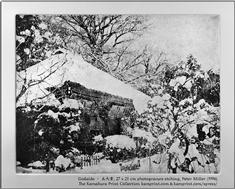
87. Godaido ・ 五大堂。 27 x 21 cm (11 x 8") photogravure etching, Warm black etching ink on Magnani paper (1996)
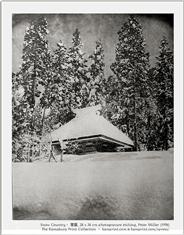
76. Snow Country ・ 雪国。 28 x 35 cm (11 x 14") photogravure etching, Black & silver etching inks on Fabriano paper (1996)*
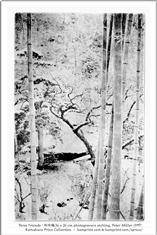
95. Three Friends ・ 松竹梅。 16 x 26 cm (6 x 10") photogravure etching, Cool black etching ink on Magnani paper (1997) three friends of winter -- pine, bamboo, and plum
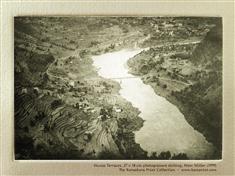
123. Hunza Terraces. 27 x 18 cm (11 x 7") photogravure etching, Warm black & ochre etching inks on Ganpi collé d to Lana Gravure (1999) rice terraces in Hunza, northern Pakistan
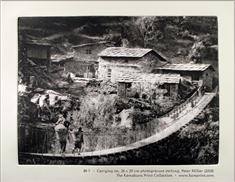
238. Carrying-on, 26 x 19 cm (10 x 8") photogravure etching, Black etching ink on Fabriano Tiepolo paper (2008) suspension bridge to the village of Korcha Besi, Nepal
* A novel by Yasunari Kawabata depicts 'snow country' suddenly emerging on the other side of a tunnel during a train ride from Tokyo, a magical and disorienting compression of time.
Shirakawa Village was once the center of Japan's silk road. Having learned from the Chinese the precious secret of coaxing silkworms to spin silk, Shirakawa sent silk to the kimono-weavers of Kyoto, who delivered exquisite garments to the Imperial court and later to the rich merchants of Edo (Tokyo). The silkworms live on a special diet of mulberry leaves and spin their cocoons when kept properly warm. This the people of Shirakawa did by placing the silkworms at the apex of their A-frame (gassho-zukuri) houses and keeping fires going on the first floor throughout the cold winter.
The fiber that was the foundation of China's prosperity, and the object of Europe's missions to Asia over the Silk Road, soon worked a similar magic in Japan. Demand for silk later stimulated mechanization of Japan's textile industry, a major precursor of other industries. Toyota Motor, for example, started as a subsidiary of the Toyoda Automatic Loom Works. So important was the silk industry to Japan's economy that it was targeted for destruction in the 1940s by DuPont. Nylon stockings, a cheaper substitute for silk, decimated the Japanese silk industry. It never regained its former heights, though it remains the fabric of choice for kimonos and other elegant wear.
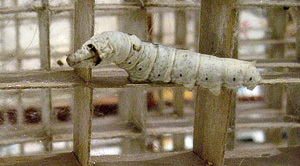 Silkworms are curiously intelligent-looking creatures, exploring their environment with purposeful intent, dedicated to finding the best place for their cocoons. Then they encase themselves in the most exquisite fiber in nature. Exactly how they do it is a mystery. Their requirements are very exacting. Scientists have tried substituting a small amount of mulberry leaves mixed with cheaper ingredients. The silkworms will still spin their cocoons, but the resulting silk is of inferior quality. You can see the silkworms, live, in action at the Yokohama Silk Museum, at No. 1 Yamashita-cho, Naka-ku, Tel 045-641-0841.
Silkworms are curiously intelligent-looking creatures, exploring their environment with purposeful intent, dedicated to finding the best place for their cocoons. Then they encase themselves in the most exquisite fiber in nature. Exactly how they do it is a mystery. Their requirements are very exacting. Scientists have tried substituting a small amount of mulberry leaves mixed with cheaper ingredients. The silkworms will still spin their cocoons, but the resulting silk is of inferior quality. You can see the silkworms, live, in action at the Yokohama Silk Museum, at No. 1 Yamashita-cho, Naka-ku, Tel 045-641-0841.
Shirakawa Village, in Gifu Prefecture, is a UNESCO World Heritage Site that looks much as it did in the heyday of the silk trade. To re-thatch the roof, as in Roofwork above, everyone pitches in, as it's too much for one family. All the houses face the same way, sheltering from the wind that blows through the valley in winter (Shirakawa-mura). Snow outlines their structures (Facing the Storm and Silk Houses) and nearly encases them in its own sort of cocoon (Ainokura)
Series: Temples・寺; Dreamscapes・夢; Seascapes・海; Furusato ・ ふるさと; Pathways・道; Mongolia・モンゴル; Acts & Scenes・町; Unseen ・ 見残す
Contact ・ 連絡: Please type  into your email (日本語 OK).
into your email (日本語 OK).